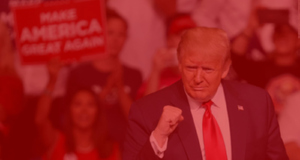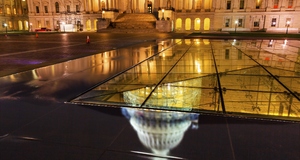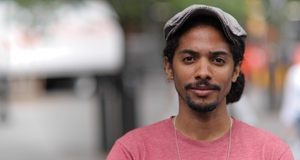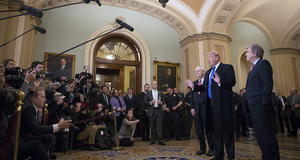Securitization, Framing, and the Threat of Right-Wing Militias Under Donald Trump
By
2021, Vol. 13 No. 10 | pg. 1/1
IN THIS ARTICLE
AbstractThis paper assesses the political preferences and ideologies of the Trump administration and how they influenced framing issues in a way that has underestimated the threats of right-wing militia groups in the United States. President Trump and officials within his administration used rhetoric to place emphasis on the security concerns associated with immigration and far left-wing groups, while failing to condemn violence coming from the right. This paper analyzes how framing, and the securitization of certain issues, downplayed and encouraged the persistent threat of far right-wing domestic terrorists and militia groups. Since the rise of the militia movement in the 1990s, right-wing extremist groups indigenous to the United States have proven to pose a severe threat to the security and unity of the nation. Domestic terrorists commit violent and criminal acts to advance their ideological goals, often of a political, religious, social, environmental, or radical nature.1 Since Donald Trump’s success in the 2016 presidential election, several new extremist organizations have been founded in the United States, bringing white supremacists with similar ideologies together.2 Domestic terrorism is not a new challenge for the United States, however President Trump and his administration’s refusal to acknowledge and condemn right-wing militia groups, and instead securitize other issues, has led to a systemic overlook of the threat coming from far-right extremist groups. The securitization of issues such as immigration and political opposition has shifted the threat perception away from homegrown terrorists, despite evidence suggesting that far right-wing domestic groups pose the greatest risk to the United States.3 This paper will assess how the political preferences and ideologies of the Trump administration influenced framing issues in a way that has under-estimated the threats of right-wing militia groups in the United States. President Trump and officials within his administration have used rhetoric to place emphasis on the security concerns associated with immigration and left-wing groups, while failing to condemn violence coming from the right. This paper will analyze how framing, and the securitization of certain issues, have downplayed the persistent and existing threat of far right-wing domestic terrorists and militia groups.BackgroundFormal and informal paramilitary groups began to form in 1993, not long after the FBI siege of a compound of extremists in Waco, Texas. However, other anti-government, facist groups have existed in the United States since before World War II. While the purpose of these groups vary, the majority of them express strong beliefs in white supremacy, government conspiracy theories, and the protection of certain claimed rights, such as the right to bear arms.4 The radical right refers to a movement that is beyond moderate conservatism, that refuses to accept the recent past, and is opposed to the status quo.5 The narrative President Trump has adopted when engaging in discussions regarding political opposition, and his questioning of the legitimacy of the American government and democracy, relates to the ideologies of these groups.6 Since the start of Donald Trump’s campaign, white supremacists have looked at Trump’s use of fear politics as encouragement, and some of the most prominent far-right groups, such as the Proud Boys, have publicly embraced and endorsed him.7 The president has repeatedly denounced far-left groups such as Antifa, but has yet to condemn extremist groups on the far right, as he risks losing their support and since these groups' ideologies fall more in line with his own. Trump has viewed their acts of violence or radical statements not as acts of terrorism, but as a response to the threat coming from the left.8 In October 2020, the Department of Homeland Security reported that domestic violence extremists present the most persistent and lethal threat to the United States, specifically noting the highest level of threat coming from white supremacist extremists. Foreign terrorist groups such as ISIS draw support from homegrown violence extremists in the United States and their global calls for attacks have intensified significantly since 2019.9 Despite this, the Trump administration’s “relentless, single-minded focus on immigration,” combined with the framing of political opposition as a security threat, all while refusing “to talk about the rising domestic extremist threat or even use the phrase domestic terrorism” can be considered a systemic overlook of the serious implications of right-wing groups.10 The PuzzleHow have President Trump and his administration used framing and the process of securitization to under-emphasize the threat of right-wing militia groups? Securitization theory stresses a broad scope of choice, arguing that political actors do not respond to security problems, they actively create them. It argues that “security is not an objective condition but a particular kind of social achievement. By declaring something a ‘security’ issue, political actors engage in a speech act with the potential to transform social relations and recast an issue in terms of survival, urgency, and the need for emergency action.”11 When events are open to multiple perspectives, securitization can result in possible unintended consequences resulting in contextual, social, and temporal contingencies.12 Framing also relates to the construction of threats by way of agenda setting and priming, relating to a wide range of social fields. Although the methodology of framing and process of securitization have generally been viewed as separate frameworks, both embody similar concepts, terminology, and theoretical developments that suggest elites can portray certain issues as threats and other issues as insignificant.13 Critical work done on security studies holds that “audiences are exposed to issues from the perspective of values held by economic and political elites rather than a range of perspectives.”14 In this regard, the way which actors, such as the president, frame security threats to the public immensely impacts how individuals perceive and form responses to these issues. Together, the methodology of framing and the process of securitization represent how political elites can engage in rhetoric that promotes certain issues as threats while de-emphasizing others. Political FramingPresident Trump and his administration have downplayed the threat of right-wing militant groups by failing to acknowledge violence and extreme ideologies coming from far-right extremist groups. They have instead rhetorically framed political opposition and immigration as security threats. This has further emboldened and strengthened the position of right-wing extremists. The anti-facist protest movement known as Antifa began in the 1960s in Europe, but gained new prominence in the United States as a response to the increase in white supremacist and other far-right extremest groups following the 2016 election. Antifa is not a unitary organization, but rather refers to activists who come together to aggressively counter right-wing extremists both online and in person. Those identifying as part of Antifa often engage in violence when fighting political opposition, but there have been misguided generalizations as to who is part of this movement.15 Not all counter-protesters, liberals, or Democrats consider themselves to be part of Antifa. In fact, many Americans have never heard of Antifa before Trump took office.16 After the murders of George Floyd and Breonna Taylor, nationwide protests called attention to the Black Lives Matter movement and police brutality. Donald Trump has been quick to place the blame of riots and racial unrest on Antifa, Democrats, and liberals, and asserted that the U.S. government will be “designating Antifa as a terrorist organization.”17 FBI director Christopher Wray testified in front of the House Homeland Security Committee and contradicted the White House’s statement noting that Antifa is not a group or organization. When asked about the greatest domestic terrorism threats facing the U.S., Wray did not name Antifa. Instead, he cited the violent extremists who support the president: Within the domestic terrorism bucket, the category as a whole, racially motivated violent extremism is, I think, the biggest bucket within that larger group, within the racially motivated violent extremist bucket. People ascribing to some kind of white supremacist-type ideologies is certainly the biggest chunk of that. When it comes to extremist violence in the U.S., 2019 was the deadliest year since 1995.18 Despite far-right extremists killing more people since 1995, the president refuses to accept the danger of these groups.19 Instead, by framing Antifa and Democrats as those responsible for unrest, ideologies of those on the far right are perpetuated and violence on their behalf is sanctioned. The Trump administration not only downplays the threat from the far right, but sends messages of encouragement to them as well. During a protest on August 26, 2020 over the police shooting of Jacob Blake in Kenosha, Wisconsin, 17-year-old Kyle Rittenhouse was arrested for the fatal shooting of two people during the demonstration.20 Trump publicly defended the teenager, who had attended at least one of his rallies, turning the attention away from Rittenhouse, and onto the counter-protesters. He claimed Rittenhouse was in very big trouble and was trying to “get away from them to avoid being killed.”21 He encouraged Rittenhouse and his other supporters during this press conference, referring to them as “wonderful, hardworking, tremendous people” who simply cannot believe what is going on in cities like Kenosha.22 The protests for equality, justice, recognition of black lives, and ending police brutality were framed in a way that made those involved appear as dangerous, while Kyle Rittenhouse was protected despite his blatant act of violence. The securitization of political opposition and failure to call out individuals participating in politically motivated radical acts creates a landscape that incites fear when it comes to differing viewpoints and condones violent acts. The president has framed these violent acts as defense mechanisms. In August of 2017, The Proud Boys marched through the campus of the University of Virginia carrying tiki torches and chatting “Jews will not replace us,” and “white lives matter.” This public display of white supremecist mobilization rallied groups of counter-protesters to fight back. During the protests in Charlottesville, a white supremacist drove a car through a crowd of people, injuring 19 and killing one woman, Heather Heyer.23 This incident, which began with a menacing display from the Proud Boys, a far-right extremist group considered a “violent, nationalistic, Islamaphobic, transphobic, and misoginistic hate group” by the Anti-Defemation League, was an important case for the federal government.24 It provided an opportunity for “systemic White House review of the threat’s scope and causes.”25 However the president’s response was “You had some very bad people in that group, but you also had people that were very fine people, on both sides.”26 Referring to members of the Proud Boys group as “very fine people” without regard for the acts of terror and threatening chants demonstrates the lack of accountability the White House and president are taking against white supremacist groups. This in turn perpetuates and encourages the actions and messages coming from members of these groups. The Proud Boys were also mentioned during the first presidential debate of 2020, when President Trump was asked to disavow white supremacy. His response did not denounce white supremacy and the president quickly changed the subject and brought up Antifa: “Proud Boys, stand back and stand by, but I'll tell you what, somebody's got to do something about antifa and the left, because this is not a right-wing problem. This is a left-wing problem.” This statement made by the president energized members of the group, who took his comments as an endorsement. Established in the midst of the 2016 election, The Proud Boys have continuously pledged their support for the president.27 Their conservative and nationalistic framework is similar to the ideology of the president, whose discussions on the matter suggests he views their actions not as threats, but rather as passionate acts of support. The danger that comes from refusing to condemn groups such as the Proud Boys poses a threat to the safety and security of the nation. The Trump administration has stereotyped immigrants in an attempt to strengthen its anti-immigration agenda. Donald Trump has accused immigrants from Mexico of bringing crime, drugs, and rape into America. He has referred to immigrants as “thugs” and urged police not to be “too nice” to immigrants suspected of crime. Days before the 2018 midterm election, the president “characterized individuals crossing the border and seeking asylum as violent criminals terrorizing law enforcement and others on their way to wreak havoc in the United States,” referring to their immigration as an “invasion.”28 The Trump administration’s suggestion that deporting undocumented immigrants, decreasing refugee numbers, and banning individuals from certain countries will decrease the risk of terrorism is contradictory to the 2020 Homeland Threat Assessment put forth by Trump’s own Department of Homeland Security. The Trump administration’s “commitment to securing the southern border against irregular migration” comes with various implications and interpretations.29 The administration has framed policies that limit immigration to the United States, such as constructing a border wall, as ways to “protect American workers” and “advance the safety and prosperity of all Americans.”30 President Trump has accused Mexican immigrants of being “rapists” and “bringing drugs and crime” to America throughout his political campaign, in an attempt to warrant the securitization of the topic.31 The Center for Immigration Studies finds these claims damaging, as research shows there is no evidence supporting the claim that immigrants are more likely to commit crime in America than native-born Americans.32 Congresswoman Veronica Escobar believes that “President Trump’s call for a wall is simplistic and misguided. While there is indeed a crisis on the border, it’s not the one the president describes and, in fact, his ‘solution’ will only make things worse.”33 As of 2019, U.S. Immigration and Customs Enforcement (ICE) announced it was to move forward with its accelerated deportation process known as “expedited removal.” This process prohibits select immigrants from receiving due process by deporting them before they would be able to present their case in front of an immigration judge.34 Tony Pham, the senior official performing the duties of the ICE director, spoke on this process stating, “[The] ability to implement this important statutory tool will further enable us to protect our communities and preserve the integrity of our nation's congressionally mandated immigration laws.”35 The notion that our communities need to be “protected” from immigrants, as well as the language used by President Trump alluding to the harmful intentions of Mexican immigrants, criminalizes immigrants. For the past decade, there has been no evidence directly correlating immigration to higher crime rates and studies show immigrants are less likely to repeatedly commit serious offenses than native-born Americans.36 While proper immigration procedures and regulations are necessary to ensure legal and documented entrance into the country, securitizing immigration and implementing rapid response policies reinforce the perception that immigrants are a threat to the United States, misrepresenting where dangers to the United States arise. While terrorist threats from abroad exist, the most prevalent threat to the United States comes from American citizens. National security strategist P.W. Singer recalled senior administration officials during the first year of Trump’s presidency only wanting to discuss Muslim extremism when building a counterterrorism strategy, despite being aware of the growing threat violent right-wing militia groups were posing to the nation.37 Based on the 2020 Homeland Threat Assessment, terrorist expert Malcom Nance referred to self-proclaimed militia groups as a “particular strain of vanilla ISIS.”38 This comparison has been made in several academic debates on the matter, and while militia groups exercise their right to bear arms, Ali Velshi asserts that it is not just the guns that are the problem. He claims: “[President Trump’s] rhetoric emboldens and empowers those who believe — or are willing to be convinced — that immigrants are rapists… that Muslims are fanatics.”39 By failing to address the threat domestic violent extremists and homegrown violent extremists pose to the United States while incorrectly demonizing immigrants, the Trump administration is overlooking domestic terrorism, contributing to its growing and persistent threat. ConclusionDomestic terrorism is the greatest threat to the unity and security of the United States. Since Donald Trump has been elected, there has been a continued growth and prevalence of far-right extremist groups, abetted by the president’s actions and commentary. The process of securitization and framing, while failing to acknowledge homegrown terrorism from far-right groups, demonstrates how President Trump and his administration have under-emphasized the threat of right-wing extemism. The pattern of distrust in this administration, further intensifies these radical groups’ opinions on political opposition and disagreement. Consistent emphasis on far-left movements, using fear politics to heighten negative attitudes towards immigrants and refusing to condemn white supremacy for the betterment of the nation further demonstrate the Trump administration’s systemic overlook of terrorism from far-right groups. In the future, Americans must work together to condemn extremism and admit to threats to the nation, even if they are domestic. Bipartisan legislation must be passed to hold radical groups accountable for their actions and ensure cooperation, which will prevail beyond governmental institutions and be accepted by American citizens throughout the country. The fear of losing political support must not be greater than the fear of losing the democratic principles which secure and support the United States. Denouncing white supremacy, politically motivated violence, and acknowledging threats coming from the homeland are all measures future presidents can take to bring Americans together and reduce the threat of homegrown terrorism. ReferencesBarros, Aline. “How the Trump Administration Dramatically Reshaped US Immigration Policy,” VoaNews. 2020. Collins, Ben and Brandy Zadrozny, “Proud Boys Celebrate After Trump’s Debate Callout,” NBC News. 2020. Diaz, Jaclyn. “Wisconsin Man Charged With Providing Rifle Used In Kenosha Protest Shootings,” npr. 2020. Ecarma, Caleb.“The FBI Director Just Blew Up Trump’s Anti-Antifa War Plan,” Vanity Fair. 2020. Ewing, Walter, Daniel E. Martínez, and Rubén G. Rumbaut. “The Criminalization of Immigration in the United States,” American Immigration Council, 2015. Haltiwanger, John.“Trump has Repeatedly Been Endorsed by White Supremacist Groups and Other Far-right Extremists,” Business Insider, 2020. “Homeland Threat Assessment,” The Department of Homeland Security. 2020. Karl-Gerhard, Lille. “Securitization of Immigration under the Trump Administration: Reconceptualizing the Functional Actor through the Judiciary and the Media,” Faculty of Social Science Johan Skytte Institute of Political Studies. 2018. Lipset, Seymour Martin. "The Radical Right: A Problem for American Democracy." The British Journal of Sociology 6, no. 2 (1955): 176-209. MacFarquhar, Neil. Alan Feuer, Mike Baker and Sheera Frenkel, “Far-Right Group That Trades in Political Violence Gets a Boost,” The New York Times. 2020. Martin, Jonathan. “Donald Trump’s Barrage of Heated Rhetoric Has Little Precedent,” The New York Times, 2016. Reitman, Janet.“U.S. Law Enforcement Failed to see the Threat of White Nationalism. Now They Don’t Know. The New York Times Magazine, 2018. Scott, Eugene. “Trump’s Most Insulting- and Violent- Language is Often Reserved for Immigrants,” The Washington Post. 2019. “Standing By: Right-Wing Militia Groups and the US Election,” The Armed Conflict Location and Event Data Project, 2020. Swan, Betsy. “Trying to get Trump to Care About Right-Wing Terrorism,” Politico. 2020. “Terrorism.” Federal Bureau of Investigation. FBI, 2016. “The Militia Movement.” Anti-Defamation League. The White House, “Immigration,” The White House. 2020. Tracy, Abigail. Trump’s Kid-Glove Handling of White Supremacists Could Create a Homegrown Crisis, Vanity Fair. 2020. Van Rythoven, Eric. The Securitization Dilemma, Journal of Global Security Studies, Volume 5, Issue 3, 2020. (478-493). Velshi, Ali. “What Happens When Trump Sides With Enemies of the State?” MSNBC, 2020. Watson, Scott D. “‘Framing’ the Copenhagen School: Integrating the Literature on Threat Construction.” Millennium 40, no. 2, 2012. (279-301). “Who Are Antifa?” Anti-Defamation League. 2020. Ye Hee Lee, Michelle. “Donald Trump’s False Comments Connecting Mexican Immigrants and Crime,” The Washington Post. 2015. Endnotes1.) “Terrorism.” FBI. FBI, May 3, 2016. 2.) “Standing By: Right-Wing Militia Groups and the US Election,” The Armed Conflict Location and Event Data Project, 2020. 3.) “Homeland Threat Assessment,” The Department of Homeland Security. 2020. 4.) “The Militia Movement.” Anti-Defamation League. 5.) Lipset, Seymour Martin. "The Radical Right: A Problem for American Democracy." The British Journal of Sociology 6, no. 2 (1955): 176-209. 6.) Jonathan Martin, “Donald Trump’s Barrage of Heated Rhetoric Has Little Precedent,” The New York Times, 2016. 7.) John Haltiwanger, “Trump has Repeatedly Been Endorsed by White Supremacist Groups and Other Far-right Extremists,” Business Insider, 2020. 8.) Janet Reitman, “U.S. Law Enforcement Failed to see the Threat of White Nationalism. Now They Don’t Know. The New York Times Magazine. 2018. 9.) “Homeland Threat Assessment,” The Department of Homeland Security. 2020. 10.) Betsy Swan, “Trying to get Trump to Care About Right-Wing Terrorism,” Politico. 2020. 11.) Eric Van Rythoven, The Securitization Dilemma, Journal of Global Security Studies, Volume 5, Issue 3, 2020. (478-493). 12.) Eric Van Rythoven, The Securitization Dilemma, Journal of Global Security Studies, Volume 5, Issue 3, 2020. (478-493). 13.) Watson, Scott D. “‘Framing’ the Copenhagen School: Integrating the Literature on Threat Construction.” Millennium 40, no. 2, 2012. (279-301). 14.) Watson, Scott D. “‘Framing’ the Copenhagen School: Integrating the Literature on Threat Construction.” Millennium 40, no. 2, 2012. (279-301). 15.) “Who Are Antifa?” Anti-Defamation League. 2020. 16.) “Who Are Antifa?” Anti-Defamation League. 2020. 17.) Caleb Ecarma, “The FBI Director Just Blew Up Trump’s Anti-Antifa War Plan,” Vanity Fair. 2020. 18.) Caleb Ecarma, “The FBI Director Just Blew Up Trump’s Anti-Antifa War Plan,” Vanity Fair. 2020. 19.) Caleb Ecarma, “The FBI Director Just Blew Up Trump’s Anti-Antifa War Plan,” Vanity Fair. 2020. 20.) Jaclyn Diaz, “Wisconsin Man Charged With Providing Rifle Used In Kenosha Protest Shootings,” npr. 2020. 21.) Abigail Tracy, Trump’s Kid-Glove Handling of White Supremacists Could Create a Homegrown Crisis, Vanity Fair. 2020. 22.) Abigail Tracy, Trump’s Kid-Glove Handling of White Supremacists Could Create a Homegrown Crisis, Vanity Fair. 2020. 23.) Betsy Swan, “Trying to get Trump to Care About Right-Wing Terrorism,” Politico. 2020. 24.) Ben Collins and Brandy Zadrozny, “Proud Boys Celebrate After Trump’s Debate Callout,” NBC News. 2020. 25.) Betsy Swan, “Trying to get Trump to Care About Right-Wing Terrorism,” Politico. 2020. 26.) Betsy Swan, “Trying to get Trump to Care About Right-Wing Terrorism,” Politico. 2020. 27.) Neil MacFarquhar, Alan Feuer, Mike Baker and Sheera Frenkel, “Far-Right Group That Trades in Political Violence Gets a Boost,” The New York Times. 2020. 28.) Eugene Scott, “Trump’s Most Insulting- and Violent- Language is Often Reserved for Immigrants,” The Washington Post. 2019. 29.) Eric Van Rythoven, The Securitization Dilemma, Journal of Global Security Studies, Volume 5, Issue 3, 2020. (478-493). 30.) The White House, “Immigration,” The White House. 2020. 31.) Karl-Gerhard Lille, “Securitization of Immigration under the Trump Administration: Reconceptualizing the Functional Actor through the Judiciary and the Media,” Faculty of Social Science Johan Skytte Institute of Political Studies. 2018. 32.) Michelle Ye Hee Lee, “Donald Trump’s False Comments Connecting Mexican Immigrants and Crime,” The Washington Post. 2015. 33.) “Reasons to Oppose the Border Wall,” America’s Voice. 2018. 34.) Aline Barros, “How the Trump Administration Dramatically Reshaped US Immigration Policy,” VoaNews. 2020. 35.) Aline Barros, “How the Trump Administration Dramatically Reshaped US Immigration Policy,” VoaNews. 2020. 36.) Ewing Walter, Daniel E. Martínez, and Rubén G. Rumbaut, “The Criminalization of Immigration in the United States,” American Immigration Council. 2015. 37.) Janet Reitman, “U.S. Law Enforcement Failed to see the Threat of White Nationalism. Now They Don’t Know. The New York Times Magazine. 2018. 38.) Ali Velshi, “What Happens When Trump Sides With Enemies of the State?” MSNBC. 2020. 39.) Ali Velshi, “What Happens When Trump Sides With Enemies of the State?” MSNBC. 2020. Suggested Reading from Inquiries Journal
Inquiries Journal provides undergraduate and graduate students around the world a platform for the wide dissemination of academic work over a range of core disciplines. Representing the work of students from hundreds of institutions around the globe, Inquiries Journal's large database of academic articles is completely free. Learn more | Blog | Submit Latest in Political Science |


















